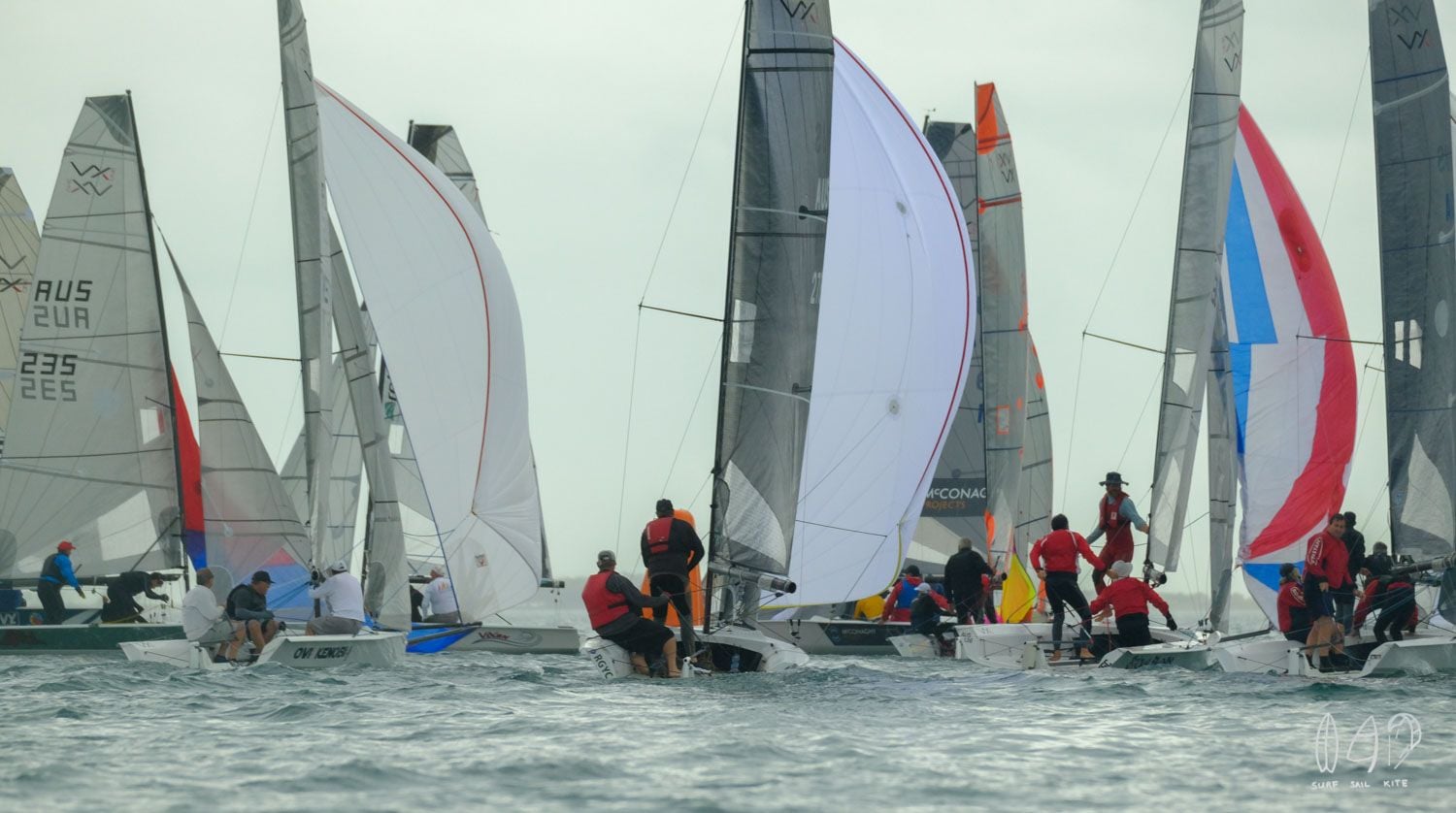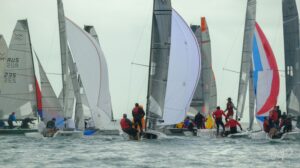

Plenty of effective practices make a difference, and I have outlined a few below.
Jib Leech Telltale
Most jibs perform well when they’re tight enough that the top leech telltale stalls occasionally.
The sweet spot for a jib is slightly in from telltale full flow, say 90-95 per cent and the jib will be in far as possible without stalling airflow through the slot.
This will help your speed and pointing. If you’re not going well upwind, jib trim is one of the first places to make an adjustment.
Exit Angles
One of the most important steering techniques for boat speed is efficient exiting jibes and tacks.
The exit angle affects your heel and acceleration. You should come out of tacks just below closehauled with eased sheets to accelerate before trimming in and heading up.
During jibes, you should come out just a little higher than your normal course and accelerate before steering to your downwind angle.
Spinnaker Trim
A good spinnaker trimmer is always easing the kite until they see a slight curl in the luff, as soon as it curls, trim in slightly to eliminate the curl.
Repeat this process over and over slavishly watching the luff.
The trimmer can sense lifts and headers by constantly easing for a curl and watching the bow to see if the boat has turned. If you ease more than normal before getting the curl, and the skipper has sailed straight, you have been lifted.
In a multi-crewed boat, the trimmer can pass this information to the tactician who can then decide whether to gybe or not. If the trimmer has sensed a knock, likewise he passes this info on so that the decision may be to continue on this board.
BOOK FOR YOUR SAILING BUDDY (and one for yourself)
Weight
All boats are sensitive to weight but dinghies and sports boats are particularly sensitive.
Eliminate unnecessary spares, clothing and tools to ensure you are sailing at an optimal weight for your class.
In many small boats, crew weight is also critical so refer to class tuning guides or notes to ensure that you are not sailing heavy or light.
By being light, you can plane more quickly downwind, and the gains are huge, especially in marginal conditions. But bear in mind that if you are too light you will struggle upwind in heavy conditions and the gains made downwind will not compensate for the loss upwind.
Crewing Roles
Defining who does what is critically important. It ensures that you’re prepared for everything and gives everyone a purpose.
Boathandling issues arise from the crew not knowing what each is expected to do in a tack, gybe and mark rounding.
Don’t just leave things to chance and hope someone will get to it.
Get to the Race Track Early
Arriving on the course early allows you to figure out the wind and racecourse, and tune your boat for the conditions.
Do start line research and a few practice starts to get the team dialled in. You’re far more likely to start well, sail fast, and go the right way after this warm-up.
Use Other Boats or Fleets as Telltales
Observe how far boats in your fleet are heeling, how many bodies are on the rail, and the angles they’re sailing.
By watching others, you can see what the wind angles are on different parts of the racecourse.
If you are on a course with multiple fleets, you get even more data ahead of and behind you to let you know what is headed your way.
Sailing Instructions
Many teams lose critical points by not carefully reading the sailing instructions or checking the notice board every morning.
Missing the downwind finish because it’s opposite the starting or line mistaking the colour of the change marks. Not knowing that penalties are changed from two turns to one are “unforced errors.”
After reading the sailing instructions, share salient points with the team on the way to the course.
Douse Early
It’s faster to go downwind with a jib than upwind with a spinnaker.
Going upwind with the kite flapping is a common mistake but one of the easiest to eliminate.
Start your douse a few seconds earlier than you think you should. This will free you up to focus on a smooth turn with proper sail trim and heel angle.
A good rounding gives you tactical options to go straight in a good lane or to tack if you wish.

